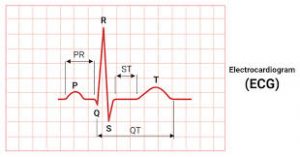Electroencephalogram : 100 Years

The year 2024 marks the centennial of the discovery of the electroencephalogram (EEG) by German psychiatrist Hans Berger.
- It remains a crucial tool for understanding the brain.
- Electroencephalogram (EEG) is a recording of brain activity. It is a test that detects abnormalities in your brain waves, or in the electrical activity of your brain.
- During the procedure, electrodes consisting of small metal discs with thin wires are pasted onto your scalp.
- The electrodes detect tiny electrical charges that result from the activity of your brain cells.
- The charges are amplified and appear as a graph on a computer screen or as a recording that may be printed out on paper.
- The EEG is used to evaluate several types of brain disorders.
- The EEG may also be used to determine the overall electrical activity of the brain (for example, to evaluate trauma, drug intoxication or extent of brain damage in comatose patients).
- The EEG may also be used to monitor blood flow in the brain during surgical procedures.




